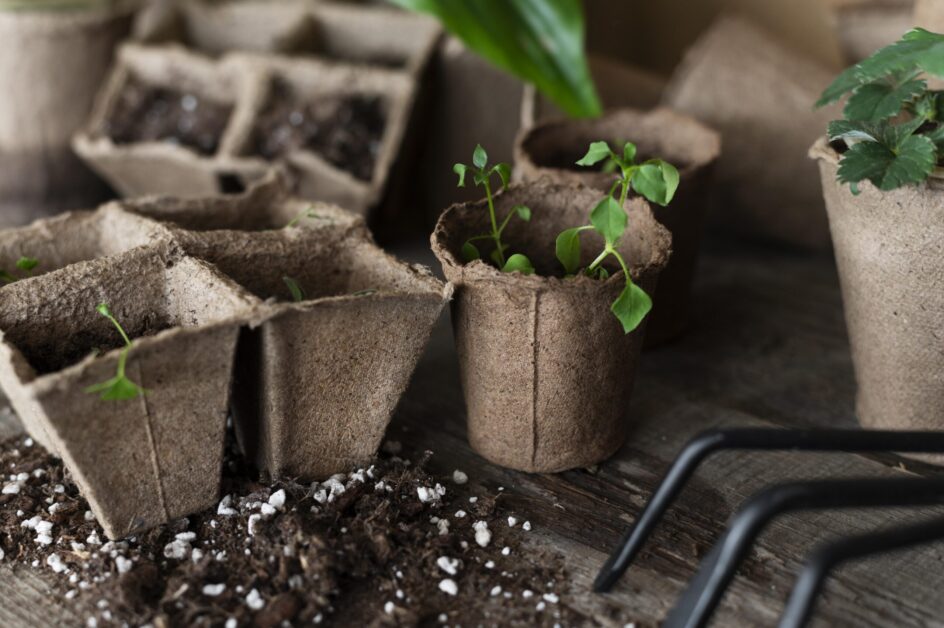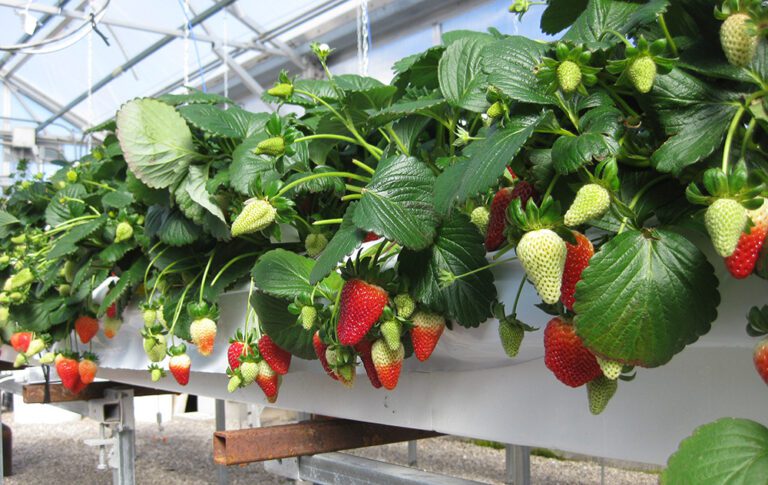Rockwool for Plants: What It Is, How It Works, and How to Use It for Your Plants
Table of Contents
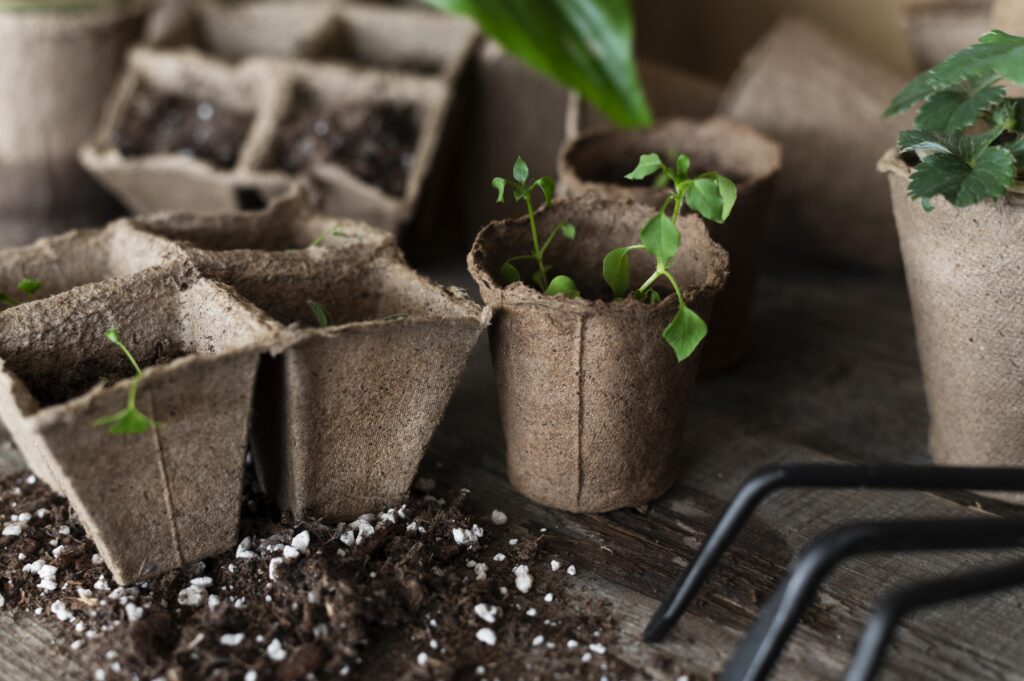
Rockwool for PlantsUnderstanding the Role of Rockwool in Plant Cultivation
Rockwool for Plants, also known as mineral wool or stone wool, plays a crucial role in the cultivation of plants. It is a versatile and widely used growing medium that provides a favorable environment for plant growth. Derived from natural materials, such as volcanic rock or basalt, Rockwool offers several benefits that make it a preferred choice among gardening enthusiasts and professionals.
One of the primary advantages of using Rockwool is its excellent water retention and drainage properties. The fibrous structure of Rockwool allows it to hold a significant amount of water, providing plants with a steady supply of moisture. At the same time, it also promotes proper drainage, preventing waterlogged conditions that can lead to root rot. This optimal balance ensures that plants receive the right amount of water for their growth and development. Furthermore, Rockwool’s ability to retain moisture helps minimize water usage, making it an environmentally sustainable choice for plant cultivation.
Another key role of Rockwool in plant cultivation is providing optimal aeration and oxygenation. The structure of Rockwool for Plants contains tiny air pockets that allow the roots to access oxygen, essential for their respiration. This ensures that plants receive an adequate supply of oxygen, promoting healthy root development and overall plant vitality. Additionally, the open structure of Rockwool allows for efficient exchange of gases, preventing the buildup of harmful byproducts and promoting the proper functioning of the plant’s respiratory system.
In summary, Rockwool for Plants plays a vital role in plant cultivation by providing a favorable environment for growth. Its excellent water retention and drainage properties ensure plants receive adequate moisture without risking root rot. Additionally, Rockwool promotes optimal aeration and oxygenation, supporting healthy root development and overall plant vitality. These benefits make Rockwool a popular choice for gardening enthusiasts seeking to maximize plant growth and achieve successful cultivation outcomes.
Exploring the Composition and Manufacturing Process of Rockwool
Rockwool, also known as mineral wool or stone wool, is a popular growing medium commonly used in hydroponics and horticulture. It is made by melting a combination of natural minerals, primarily basalt rock and limestone, at extremely high temperatures. The molten material is then spun, creating fine fibers that are collected and compressed into various forms, such as slabs, cubes, or blocks.
The manufacturing process of Rockwool for Plants involves several stages to ensure its quality and effectiveness as a growing medium. First, the raw materials undergo thorough cleaning and preparation to remove impurities. Then, they are melted in a furnace at temperatures exceeding 1,500 degrees Celsius. The molten material is spun into fibers using a spinneret, similar to how cotton candy is made. These fibers are then collected, cooled, and formed into the desired shape and size. Finally, the rockwool products undergo curing and drying processes to stabilize their structure and remove any residual moisture. The end result is a lightweight and porous material that is highly effective for cultivating plants.
The Benefits of Using Rockwool as a Growing Medium
Rockwool for Plants has gained significant popularity as a growing medium among gardening enthusiasts and hydroponic growers. One of the key benefits of using Rockwool is its exceptional water retention capabilities. Due to its porous structure, Rockwool efficiently absorbs and retains moisture, ensuring that plants have access to water when needed. This feature is especially advantageous in hydroponic systems where plants rely solely on nutrient-rich water for their growth and development.
In addition to its water retention properties, Rockwool also provides excellent drainage for plants. Its fibrous structure facilitates the flow of excess water, preventing the roots from becoming waterlogged. This is crucial for the healthy development of plants, as excessive moisture can lead to root rot and other water-related issues. The balanced moisture levels provided by Rockwool enable plants to absorb essential nutrients more efficiently, promoting robust growth and vitality.
Furthermore, Rockwool for Plants offers optimal aeration and oxygenation for plant roots. Its porous nature allows a steady exchange of air, ensuring that roots receive an adequate supply of oxygen. This, in turn, enhances nutrient uptake and encourages vigorous root development. By providing a well-aerated environment, Rockwool helps plants thrive and minimize the risk of root diseases caused by anaerobic conditions.
The benefits of using Rockwool for Plants as a growing medium go beyond its water retention, drainage, and aeration properties. Its insulating properties contribute to maintaining stable plant temperatures, creating a favorable environment for growth. By protecting plants from extreme temperature fluctuations, Rockwool helps optimize their metabolic processes and promotes overall health and productivity.
In conclusion, Rockwool for Plants offers numerous benefits as a growing medium, making it a popular choice among gardening enthusiasts. Its exceptional water retention, drainage capabilities, and ability to provide optimal aeration and insulation contribute to enhanced plant growth and yield. As we delve further into the role of Rockwool in plant cultivation, we will explore its impact on pH levels, nutrient balance, and delve into the step-by-step process of preparing and transplanting seedlings into Rockwool.
How Rockwool Enhances Water Retention and Drainage for Plants
Rockwool for Plants, also known as mineral wool or stone wool, is a highly efficient growing medium that plays a crucial role in enhancing water retention and drainage for plants. Its unique composition and structure make it ideal for promoting healthy root growth and optimizing the moisture levels needed for plant cultivation.
One of the key features of rockwool is its exceptional water retention capacity. The fibers in rockwool are designed to hold moisture and distribute it evenly throughout the growing medium, ensuring that plants have a constant supply of water. This is especially beneficial in hydroponic systems, where water is delivered directly to the roots without the use of soil. By retaining moisture in the rockwool, plants can access sufficient water even in arid conditions or during periods of drought.
In addition to its water retention capabilities, rockwool also excels in promoting proper drainage. The fibrous structure of rockwool allows excess water to flow freely through the growing medium, preventing waterlogging and the risk of root rot. This is crucial for maintaining the oxygen levels necessary for healthy root development. The porous nature of rockwool allows for effective aeration, ensuring that the roots have access to the oxygen they need for respiration. Consequently, plants grown in rockwool experience improved overall growth and vigor.
By harnessing rockwool’s ability to enhance water retention and drainage, gardeners and hydroponics enthusiasts can create an optimal environment for their plants. Whether it’s in traditional gardening setups or advanced hydroponic systems, rockwool proves to be a reliable and efficient growing medium that helps plants thrive. With its balanced moisture levels and optimal oxygenation, rockwool is a valuable asset in ensuring healthy and flourishing plant growth.
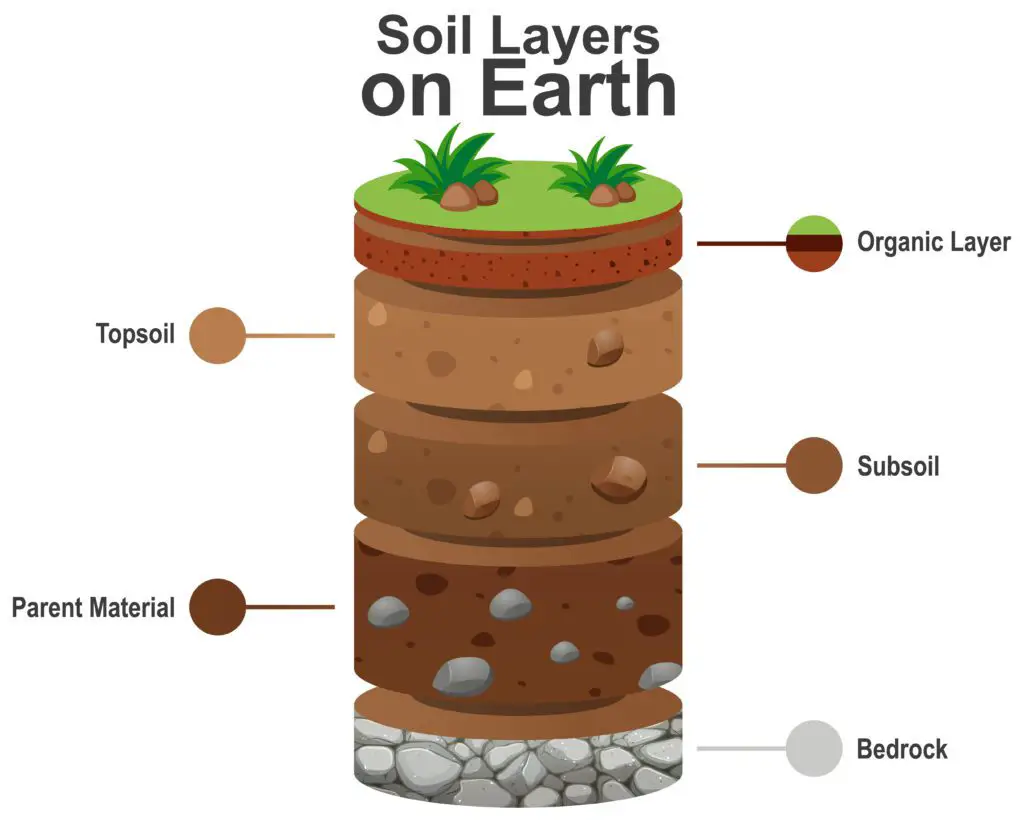
Providing Optimal Aeration and Oxygenation with Rockwool for Plants
Rockwool for Plants is an outstanding growing medium that provides optimal aeration and oxygenation for plants. One of the key benefits of using rockwool is its ability to retain and release air and water in a controlled manner, creating a well-balanced environment for plant roots. This is crucial for plants as they require oxygen to carry out respiration, an essential process for nutrient uptake and healthy growth.
The unique structure of rockwool allows it to retain air pockets within its fibers, ensuring a constant supply of oxygen to the roots. As water is added, it fills the gaps between the fibers, providing a moist environment that stimulates root growth. The combination of air and water in rockwool allows roots to access the necessary oxygen while preventing over-saturation, minimizing the risk of root rot and other water-related issues. This balanced aeration and oxygenation provided by rockwool creates an ideal growing environment, promoting vigorous root development and ultimately leading to stronger, healthier plants.
Here’s a table summarizing key information about using rockwool for plants:
| Aspect | Description |
|---|---|
| Material Composition | Rockwool is made from basalt rock and chalk, which are melted and spun into fibers. It is commonly used as a hydroponic growing medium. |
| Water Retention and Drainage | Rockwool provides a good balance of water retention and drainage, ensuring that plants receive adequate moisture without waterlogging. |
| Aeration | It offers excellent aeration to plant roots, promoting the oxygenation necessary for healthy root development in hydroponic systems. |
| pH Stability | Rockwool typically has a neutral pH, providing a stable and consistent environment for plant growth. It can be adjusted if needed. |
| Sterile and Inert | Rockwool is sterile and inert, reducing the risk of introducing pathogens to the plants. It provides a clean and disease-free growing medium. |
| Seed Germination | It is commonly used for seed starting due to its structure, which supports seedlings and allows for easy transplanting. |
| Hydroponic Systems | Rockwool cubes or slabs are popular in hydroponic systems, providing support for plants and facilitating nutrient uptake in a soil-less environment. |
| Insulation Properties | Rockwool has insulation properties, helping to maintain stable root temperatures in both warm and cool climates. |
| Reusability | While rockwool is not biodegradable, it can be reused in certain systems after proper sterilization and preparation. |
| Environmental Impact | The production of rockwool involves high temperatures, but its long lifespan and potential for reuse may offset some environmental concerns. |
| Pre-soaking and pH Adjustments | Before use, it is advisable to pre-soak rockwool to remove any potential residue. pH adjustments may be needed, especially in certain hydroponic setups. |
Keep in mind that when using rockwool, it’s essential to follow specific guidelines for preparation, pH adjustments, and irrigation to optimize its performance as a growing medium for plants.
The Insulating Properties of Rockwool for Plants and its Impact on Plant Temperature
Rockwool, a widely used growing medium in hydroponics and indoor gardening, offers excellent insulating properties that significantly impact plant temperature. The dense and fibrous structure of rockwool provides an effective barrier against heat loss, creating a stable and favorable environment for plant growth. This insulation capability plays a crucial role in maintaining optimal temperatures, especially in colder climates or when growing plants in controlled environments.
The insulation provided by rockwool helps to prevent heat from escaping and protects plants from fluctuations in temperature. This is particularly important during colder seasons when plants are more vulnerable to frost damage or temperature extremes. By acting as a thermal buffer, rockwool helps to create a more stable microclimate around the plant roots, ensuring that they receive consistent warmth and protection. This enhanced temperature regulation promotes healthy root development and overall plant vigor, leading to improved growth and productivity.
Using Rockwool to Maintain pH Levels and Nutrient Balance in Plant Growth
Maintaining the optimal pH levels and nutrient balance is crucial for the healthy growth of plants. Rockwool, a popular growing medium in hydroponics, is highly effective in helping gardeners achieve this balance.
Rockwool has a neutral pH, which means it has a minimal impact on the acidity or alkalinity of the nutrient solution. This allows gardeners to have better control over the pH levels, making it easier to adjust and maintain the ideal range for specific plant species. Maintaining the correct pH range is essential, as it directly affects the availability and uptake of essential nutrients by plants.
Moreover, rockwool has excellent cation exchange capacity (CEC). CEC refers to the medium’s ability to attract and hold nutrients, ensuring they are readily available to plants. As plants extract nutrients from the rockwool, it releases beneficial ions such as calcium, magnesium, and potassium, which are essential for plant growth. This gradual release of nutrients not only helps maintain a balanced nutrient supply, but also reduces the risk of nutrient imbalances or deficiencies.
By using rockwool as a growing medium, gardeners can maintain the optimal pH levels and nutrient balance necessary for robust and healthy plant growth. Its neutral pH and high cation exchange capacity make it a reliable choice for achieving precise control over plant nutrition. With rockwool, gardeners can provide their plants with the necessary elements for growth and enhance the overall productivity of their cultivation endeavors.
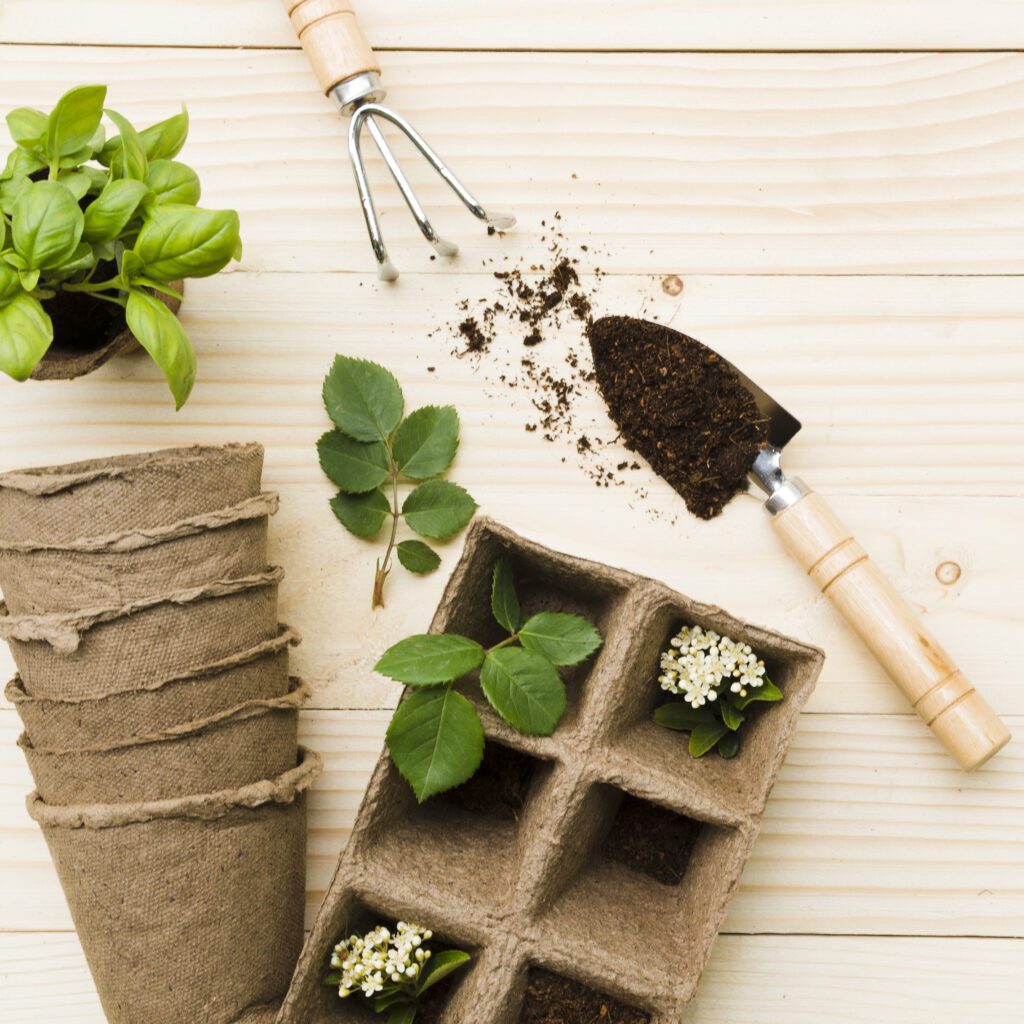
Step-by-Step Guide: Preparing Rockwool for Planting
Preparing rockwool for planting is an essential step in ensuring the optimal growth and development of your plants. To begin, gather your supplies, including a pair of gloves and a clean, sharp knife. It’s important to have clean and sterile equipment to minimize the risk of introducing any pathogens or diseases to your plants.
Start by soaking the rockwool cubes in pH-balanced water for about an hour. This helps to remove any potential impurities and ensures that the cubes are fully saturated. While the cubes are soaking, prepare your nutrient solution according to the specific requirements of your plants. Once the cubes are fully soaked, gently squeeze out any excess water, being careful not to compress the cube too much.
Next, use the clean knife to make a small hole in the top of each rockwool cube. The hole should be just large enough to fit your seed or cutting. Place the seed or cutting into the hole, making sure it is securely nestled in the rockwool. If you’re using larger rockwool slabs or blocks, you can create multiple holes to accommodate several plants. Once the seeds or cuttings are in place, gently press the rockwool around them to provide stability.
Taking the time to properly prepare your rockwool cubes ensures that your plants have a healthy and supportive environment to grow in. By following these simple steps, you can set a solid foundation for your plants’ success and promote robust growth in your garden.
Transplanting Seedlings into Rockwool: Best Practices and Tips
Planting seedlings into rockwool is a crucial step in the cultivation process that requires precision and attention to detail. To ensure the successful growth and development of your plants, it is important to follow best practices and employ effective techniques.
Firstly, it is essential to properly soak the rockwool cubes before transplanting the seedlings. This ensures that the growing medium is moist throughout, providing a conducive environment for the roots to establish themselves. Care should be taken to avoid oversaturating the cubes, as excess moisture can lead to root rot or other fungal diseases.
When transplanting the seedlings, gently remove them from their previous growing medium and place them into the pre-drilled holes in the rockwool cubes. Ensure that the root system is well spread out within the cube to encourage healthy growth. It is also recommended to cover the cubes with a plastic dome or humidity dome to create a more controlled environment that promotes root development and minimizes transplant shock.
By following these best practices and techniques, you can maximize the success of transplanting seedlings into rockwool and foster optimal plant growth. The benefits of rockwool as a growing medium will be further enhanced when coupled with proper care and consistent monitoring.
Nurturing Plant Health and Growth with Rockwool Irrigation Techniques
Rockwool irrigation techniques play a vital role in nurturing plant health and promoting optimal growth. The unique characteristics of rockwool make it an ideal medium for providing plants with the necessary moisture and nutrients they need to thrive.
One of the key benefits of using rockwool for irrigation is its excellent water retention capabilities. Its fibrous structure allows it to retain water while also promoting proper drainage, preventing root rot and waterlogging. This feature ensures that plants receive a consistent supply of moisture, reducing the risk of under or overwatering. Furthermore, rockwool’s high water holding capacity helps plants withstand drought conditions, allowing them to survive and flourish in challenging environments.
Moreover, rockwool irrigation techniques offer optimal aeration and oxygenation for plant roots. The porous nature of rockwool allows for sufficient airflow, supply of oxygen, and exchange of gases in the root zone. This facilitates the development of healthy roots, which in turn, promotes vigorous growth and nutrient uptake. Additionally, the ample oxygen supply prevents the growth of harmful anaerobic microbes and encourages beneficial microbes, fostering a balanced and healthy root environment.
Overall, rockwool irrigation techniques play a crucial role in nurturing plant health and maximizing growth potential. Its ability to ensure proper water retention, drainage, aeration, and oxygenation creates an optimal environment for plants to thrive. Incorporating rockwool into your cultivation methods can significantly enhance your gardening success, leading to healthier, more robust plants.
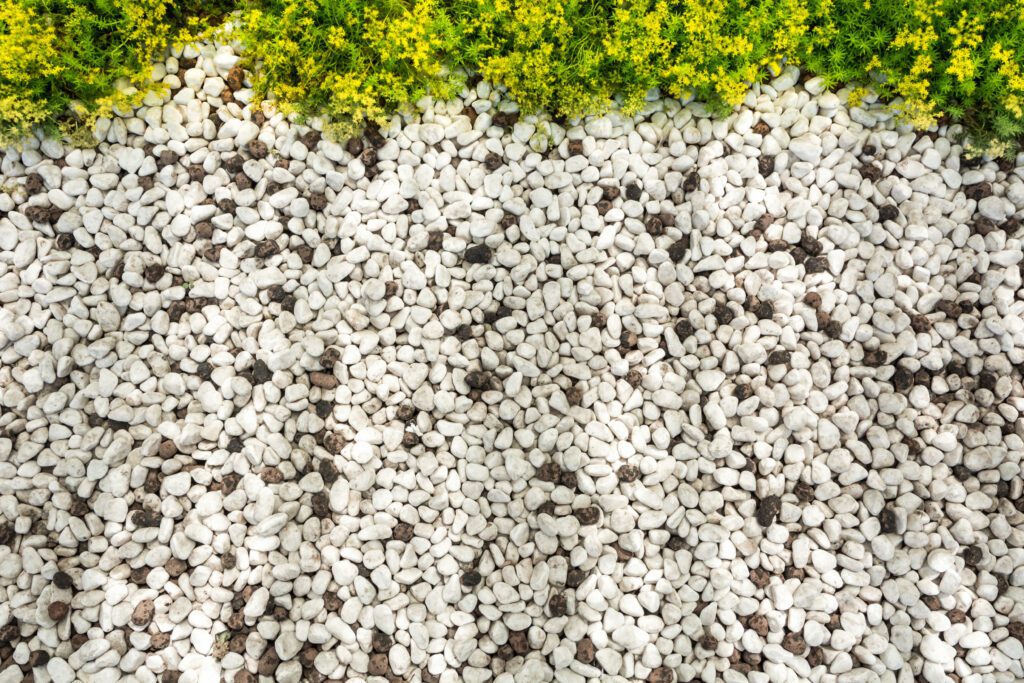
Managing Potential Challenges and Risks Associated with Rockwool Usage
Rockwool for Plants is generally considered a safe and effective growing medium for plant cultivation. However, like any other gardening technique, it is important to be aware of potential challenges and risks that may arise when using Rockwool. One potential challenge is the handling of Rockwool itself. The fibers can irritate the skin and respiratory system, so it is recommended to wear gloves and a mask when working with Rockwool to minimize any potential health risks.
Another challenge is the proper disposal of used Rockwool. Because it is made from synthetic materials, it is not biodegradable and may contribute to environmental pollution if not disposed of correctly. It is important to follow local regulations and guidelines for the disposal of Rockwool to minimize its impact on the environment. Additionally, it is advisable to consider using organic alternatives or sustainable growing mediums if environmental concerns are a priority for you.
Furthermore, it is crucial to be mindful of the pH levels and nutrient balance when using Rockwool. Rockwool tends to have a naturally high pH, which can affect the availability of nutrients to plants. Regular monitoring and adjusting of the pH levels, along with proper nutrient supplementation, are necessary to ensure optimal plant growth and health. Failure to do so may lead to nutrient deficiencies or imbalances, which can negatively impact plant growth and productivity.
In conclusion, while there are some potential challenges and risks associated with Rockwool usage, they can be effectively managed through proper handling, disposal, and ongoing monitoring of pH levels and nutrient balance. By being aware of these potential risks and taking the necessary precautions, gardeners can confidently utilize Rockwool as a reliable growing medium for their plants.
Comparing Rockwool with Other Growing Mediums: Pros and Cons
Rockwool for Plants is a versatile growing medium that offers a range of benefits for plant cultivation. When comparing rockwool with other growing mediums, there are several pros and cons to consider.
One advantage of rockwool is its excellent water retention and drainage properties. Its fibrous structure allows it to hold moisture while still facilitating proper aeration, preventing overwatering and root rot. This is particularly beneficial for plants that require consistent hydration without becoming waterlogged. In contrast, other growing mediums such as soil or coco coir may retain too much water, leading to drowning of the roots.
Another advantage of rockwool is its insulating properties. It helps to maintain a stable temperature for the plants, protecting them from extreme fluctuations. This is especially important in colder climates or for sensitive plants that are susceptible to temperature changes. In comparison, other growing mediums like soil may not provide the same level of insulation, making them less suitable for maintaining optimal temperature conditions.
Despite its numerous benefits, there are a few drawbacks to using rockwool as a growing medium. One major concern is its potential impact on the environment. Rockwool is made from mineral fibers that can take hundreds of years to decompose, contributing to landfill waste. Additionally, the manufacturing process of rockwool involves high energy consumption and the use of chemicals. However, there are initiatives in place to recycle and repurpose rockwool, minimizing its environmental footprint.
In conclusion, rockwool offers distinct advantages as a growing medium, such as enhanced water retention, insulation, and stability. However, it is essential to consider its potential environmental impact and explore alternative options that align with sustainability goals. By weighing the pros and cons, gardeners can make an informed decision about the most suitable growing medium for their specific needs.
Expert Tips and Recommendations for Maximizing Rockwool for Plants
One important tip for maximizing plant growth with rockwool is to ensure proper irrigation. Rockwool is known for its excellent water retention abilities, but it is crucial to strike a balance between moisture and drainage. Overwatering can lead to root rot and other diseases, while underwatering can cause stress and hinder growth. Regularly monitor the moisture levels in your rockwool medium and adjust your watering schedule accordingly. It is recommended to water your plants when the top layer of rockwool feels slightly dry to the touch. Additionally, consider using a pH and EC meter to accurately measure the nutrient solution’s pH and electrical conductivity levels, ensuring optimal nutrient uptake.
Another recommendation is to closely monitor the pH levels of your solution. Rockwool has a neutral pH, making it an ideal growing medium for a wide range of plants. However, as plants take up nutrients from the rockwool, the pH of the solution can shift. Monitoring and adjusting the pH regularly helps maintain a favorable environment for nutrient absorption. Most plants thrive in a slightly acidic to neutral pH range, around 5.5 to 6.5. You can use pH adjustment solutions or acids/bases to bring the pH back into the desired range. Ensuring the correct pH levels will help prevent nutrient deficiencies or toxicities and promote healthy plant growth. Regular monitoring and adjustments to pH levels are essential for successfully utilizing rockwool as a growing medium.
What is the optimal pH range for plants grown in rockwool?
The optimal pH range for plants grown in rockwool is typically between 5.5 and 6.5.
Can rockwool be reused after a crop cycle?
Yes, rockwool can be reused after a crop cycle. However, it is important to thoroughly clean and sterilize the rockwool before reusing it to prevent the spread of diseases or pests.
Is rockwool suitable for all types of plants?
Rockwool is suitable for a wide range of plants, including vegetables, herbs, and flowers. However, some plants may have specific requirements or preferences for other growing mediums.
How often should rockwool be watered?
The frequency of watering rockwool depends on various factors such as plant species, environmental conditions, and stage of growth. Generally, it is recommended to water rockwool when the top layer feels dry to the touch.
Can rockwool be used for hydroponic systems?
Yes, rockwool is commonly used as a growing medium in hydroponic systems. Its excellent water retention and drainage properties make it an ideal choice for hydroponic cultivation.
Are there any potential health risks associated with rockwool usage?
When handling rockwool, it is advisable to wear protective gloves and a mask to avoid irritation to the skin, eyes, and respiratory system. Follow the manufacturer’s safety guidelines for proper usage.
How long does rockwool last before it needs to be replaced?
Rockwool can last for multiple growing cycles before it needs to be replaced. However, its lifespan can vary depending on factors such as the quality of the rockwool and the specific growing conditions.
Can rockwool be used in outdoor gardening?
Yes, rockwool can be used in outdoor gardening. However, it is important to protect the rockwool from extreme weather conditions and ensure proper drainage to prevent waterlogging.
What are some alternatives to rockwool as a growing medium?
Some alternatives to rockwool as a growing medium include coconut coir, perlite, vermiculite, and soilless mixes. Each alternative has its own pros and cons, so it is important to choose the best option for your specific needs.
How does rockwool insulation affect plant temperature?
Rockwool insulation helps in maintaining a stable root zone temperature, protecting the plants from extreme temperature fluctuations. This can promote better plant growth and reduce stress on the plants.

